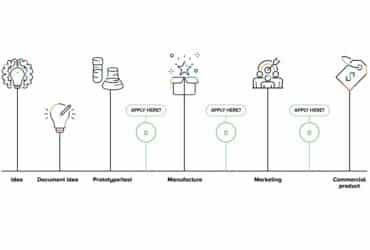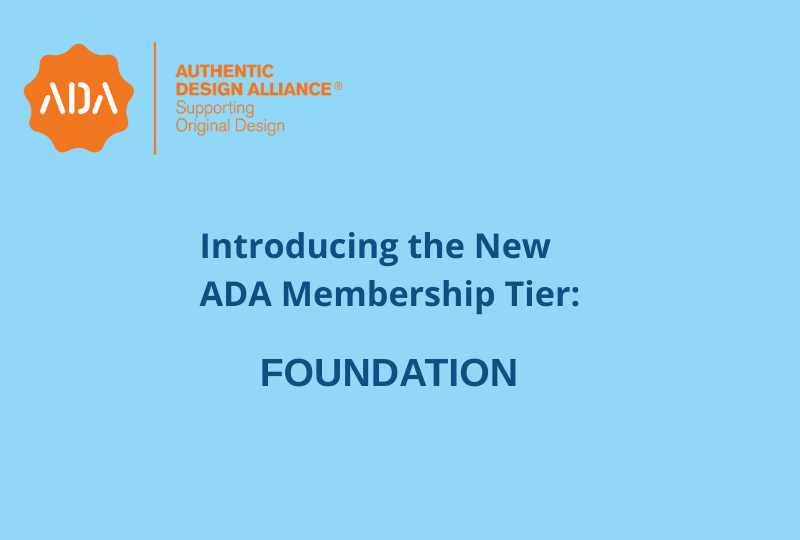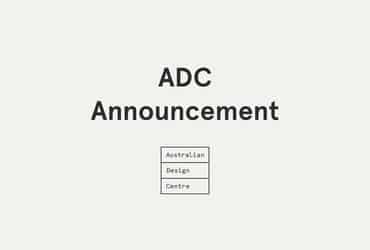Enhancing Australian Design Protection – Essential read!
IP Australia has released the outcomes of the two-year consultation on proposed ways to enhance protection for ‘Virtual’, ‘Partial’, and ‘Incremental Designs’ to further align with our trading partners.
The public consultation ran from June 13 to August 13, 2023. The ADA mostly supported the three proposals, with some suggestions for improving Partial and Incremental Designs.
Consultation Outcomes
1. VIRTUAL DESIGNS
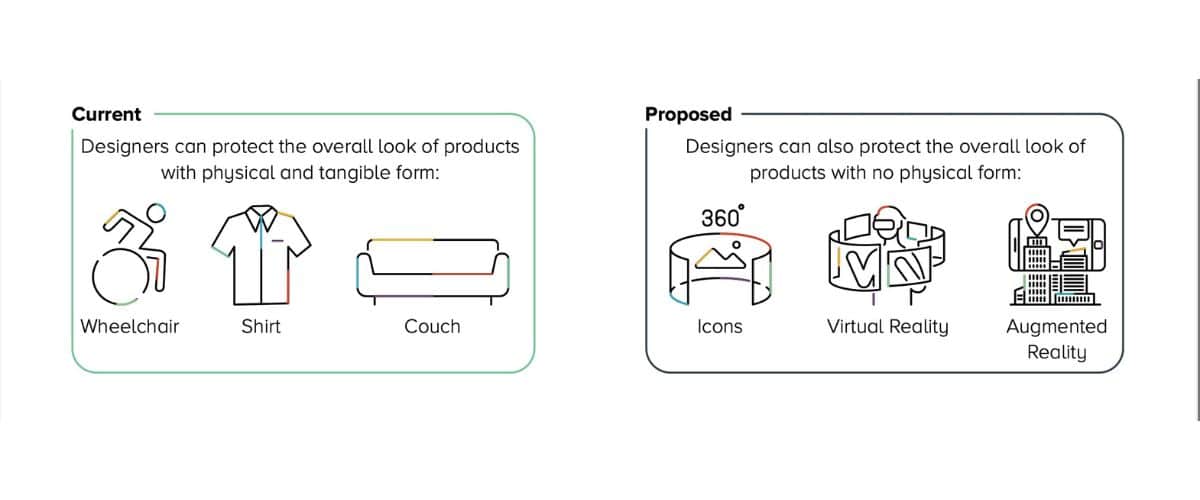
Currently, an Australian design right protects the appearance of the entire physical product, such as a wheelchair, shirt, chair or sofa.
It does not protect the appearance of products without a physical form, such as graphical user interfaces, icons, or’ virtual designs.’
Protection for virtual designs is available in many other countries but not in Australia.
IP Australia proposes to protect virtual designs, including user interfaces and product elements that are only visible when the product is used. Designers who design these kinds of products would benefit by gaining access to the registered
designs system.
Stakeholders broadly supported protecting virtual designs. IP Australia intends to proceed with the proposal to protect virtual designs, including user interfaces and product elements that are only visible when the product is in use.
Key changes and refinements considering stakeholder comments include:
- Refining the proposed new definition of virtual products.
- Permitting the filing of an application for a design applied to both a virtual and a physical product at the same time.
- Permitting video files or animations to be used as supplementary representations for dynamic designs.
- Ensuring that an owner of a virtual design right can bring infringement proceedings against the seller of a virtual product (not the customer or end-user).
- Excluding protection for non-physical virtual products that solely express an idea or entertain with no useful (functional) application, such as films or video game content, which are more appropriately and adequately protected by copyright.
- Steps to ensure that copyright protection is not lost when virtual designs are registered or commercialised.
2. PARTIAL DESIGNS
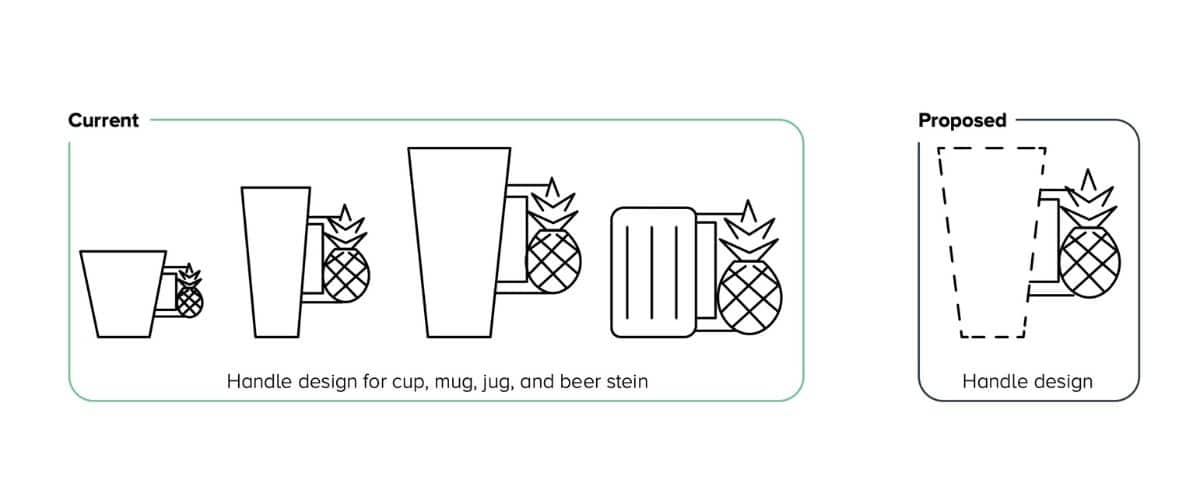
IP Australia proposes to protect design innovation for parts of whole products made in one piece.
This would align Australia with other countries that already offer design protection for parts of entire products and improve the opportunity for designers to commercially benefit from the Australian design system.
Stakeholders also broadly supported the introduction of protection for partial designs. IP Australia intends to proceed with the proposal to protect design innovation for parts of whole products made in one piece.
Key changes to the proposal considering stakeholder comments include:
- Ensuring that separate parts of a product can be registered as one design.
- Applying the current requirement for whole designs to identify a physical product that the part relates to so that it can be classified.
- Assessing validity and infringement of partial designs in the same way as they are evaluated for whole designs now. We will not proceed with the ‘similar products’ proposals in the consultation paper.
3. INCREMENTAL DESIGNS
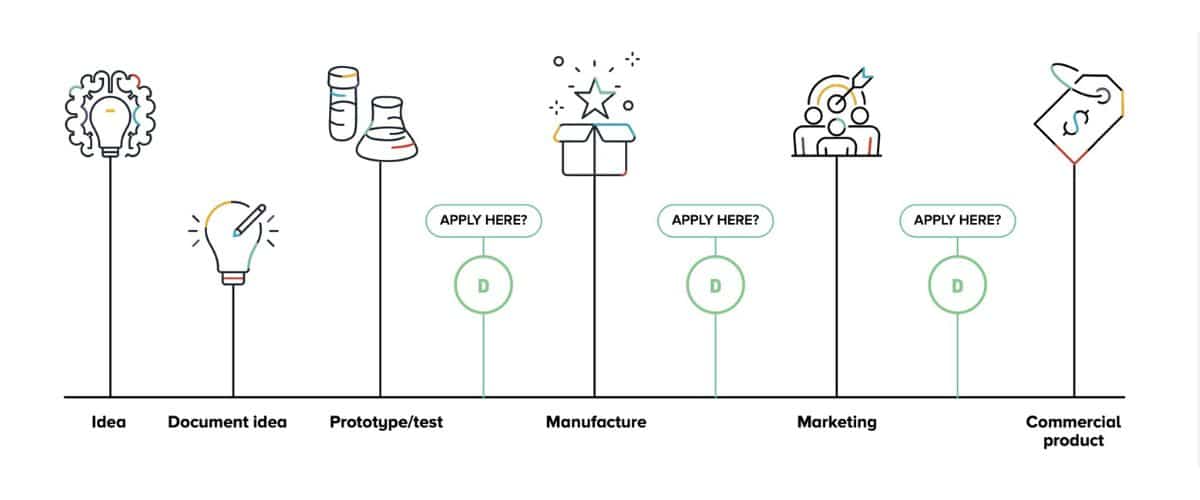
Currently, the designs system does not address the incremental nature of developing designs.
IP Australia proposes that designers be allowed to protect their designs as they develop their products throughout the design lifecycle.
3. 01 PRELIMINARY DESIGNS
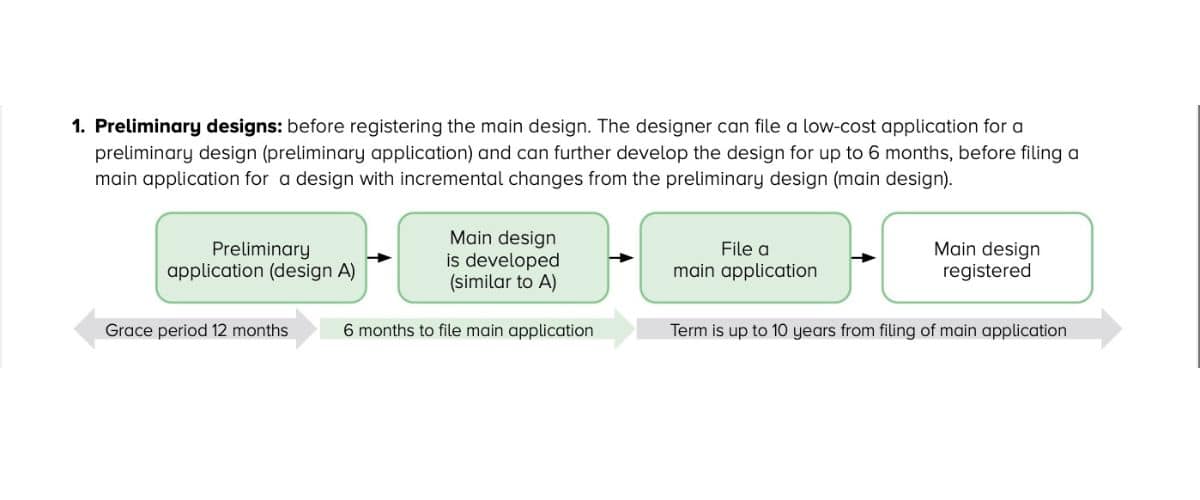
Stakeholder support for preliminary designs was mixed. Some supported the proposal’s flexibility. However, others identified difficulties obtaining protection overseas, complexity, and impacts on third parties.
Given these concerns, IP Australia does not intend to proceed with the preliminary designs proposal at this time.
3.02 POST-REGISTRATION LINKING
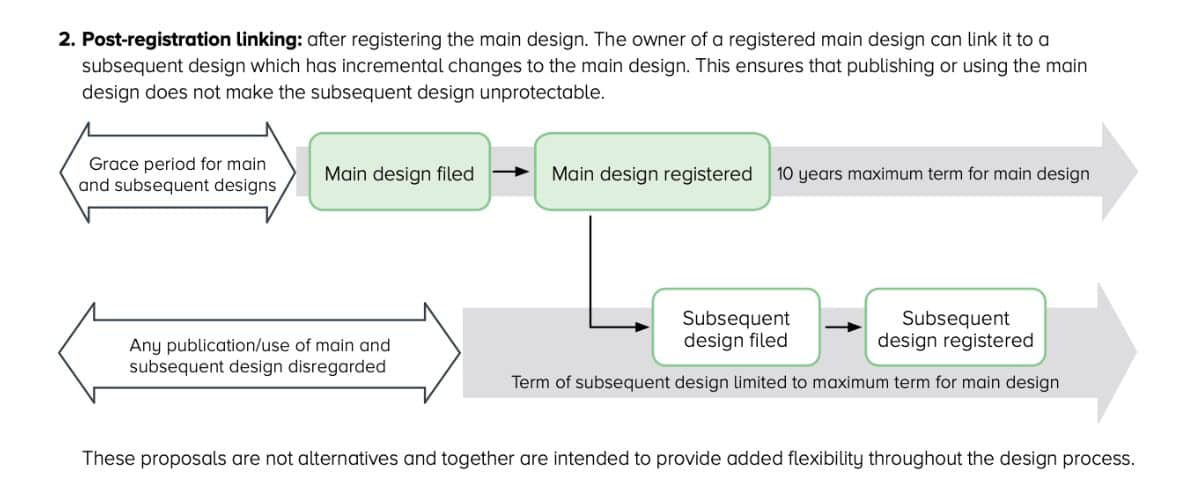
Stakeholders broadly supported post-registration linking. IP Australia intends to proceed with this proposal to allow designers to protect their designs as they develop their products throughout the design lifecycle.
Key changes to the proposal considering stakeholder comments include:
- Reducing complexity by having linking occur only during examination.
- Requiring linked designs always to have identical owners.
- Only requiring linking to the earliest substantially similar design (not the earliest design in the chain), meaning more of the subsequent design’s term is preserved.
- Permitting linking of identical designs for virtual and physical products (if not applied together).
Proposal Fact Sheets
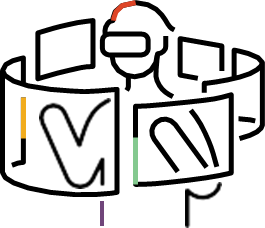 |
DOWNLOAD: Virtual designs fact sheet
How to protect virtual, non-physical designs (including screen displays, screen icons and graphical user interfaces (GUIs) |
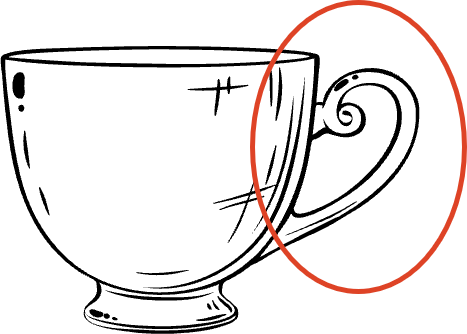 |
DOWNLOAD: Partial designs fact sheet
How to provide design protection for product parts made in one piece. |
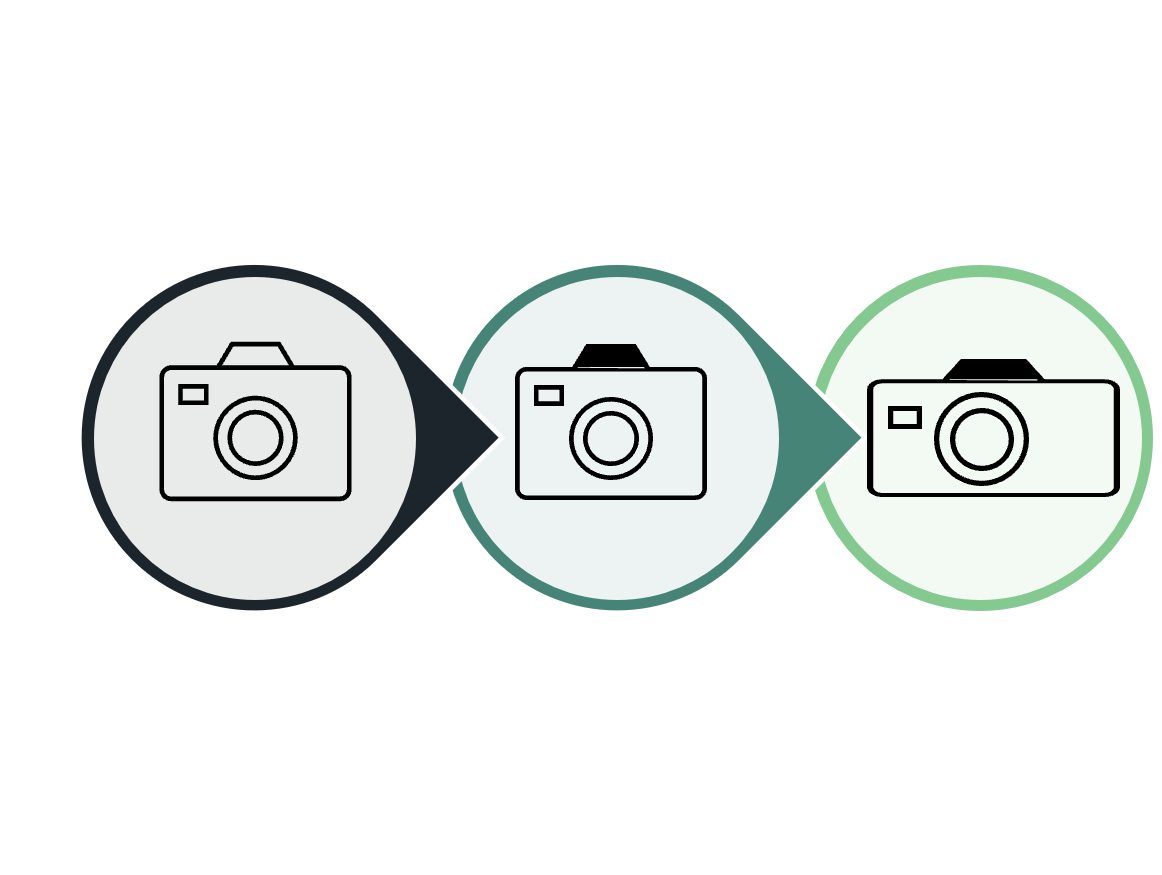 |
DOWNLOAD: Incremental designs fact sheet
How can designers have more flexibility in protecting incremental improvements to their designs throughout the design process. |
QUESTIONS? Please contact us here to arrange a call.
Images & infographics (c) IP Australia

